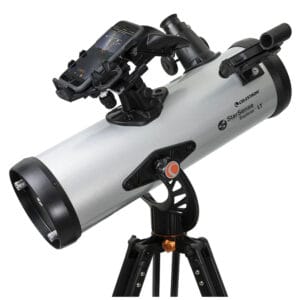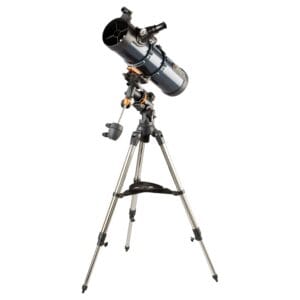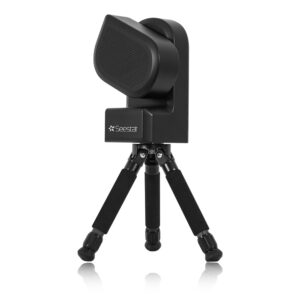What are constellations: A constellation is a recognizable group of stars in the sky that form a pattern, often based on myths, animals, or objects. People have been using constellations for thousands of years to tell stories, navigate, and – in astrology – to associate personality traits and make predictions.
Although you can often only see the brightest stars with the naked eye, you can quickly recognize patterns in a dark sky. Think of the three stars in Orion’s belt, or the saucepan shape of the Big Dipper. These patterns have been categorized and named throughout the centuries. Modern astronomy officially recognizes 88 constellations, established by the International Astronomical Union.
What are the most Famous Constellations?
Some constellations are so recognizable that you’ve probably seen them before, even without knowing their names. Here are some classics that are often recognized first:
- Orion – recognizable by its three belt stars; visible in winter.
- Big Bear (Ursa Major) – contains the famous saucepan shape; helps you find the North Star.
- Cassiopeia – has a distinct W- or M-shape; clearly visible in the north.
- Scorpius – really looks like a scorpion; visible during summer months.
These patterns are not only useful as reference points for other stars but are also rich in mythical stories.
How Can You Recognize Constellations?
Learning to recognize constellations takes practice, but with a few tools you can get quite far. A good approach:
- Use a star chart or an app like SkySafari or Stellarium.
- Start with bright constellations like Orion or the Big Dipper.
- Look for patterns, such as straight lines or curves.
- Observe throughout the year – many constellations are seasonal.
- If possible, go to a dark location outside the city; light pollution makes it much harder.
What Do Constellations Mean in Astrology?
Besides their role in astronomy, constellations also play a central role in astrology. Here it’s not about observable patterns in the sky, but about the twelve astrological signs of the zodiac. Each sign is linked to a period of the year and is associated with certain personality traits.
A few examples:
- Aries (March 21 – April 19): energetic, courageous, impulsive
- Virgo (August 23 – September 22): analytical, precise, serviceable
- Aquarius (January 20 – February 18): innovative, free-thinking, intellectual
Although astrology is not scientifically supported, horoscopes and constellation analyses remain hugely popular and culturally significant.
Constellations connect ancient stories with modern fascination. They bring structure to the starry sky, help us orient ourselves, and give meaning to what we see above us. Whether you’re interested in astronomy, astrology, or just want to make use of a beautiful summer evening to stargaze – constellations form a brilliant gateway to the universe.
Want to learn how to recognize them yourself? Visit telescoop.nl for practical guides and useful tips to discover constellations. Stargazing begins with wonder – and a little knowledge.
Where Do Constellations Come from?
The origin of constellations dates back to the oldest civilizations. As early as ancient Babylon, stars were connected into patterns to track the movement of celestial bodies and determine the seasons. This knowledge spread to the West through the Greeks and Romans, where they were systematically described.
The Greek astronomer Ptolemy described 48 constellations in his work Almagest in the 2nd century AD. Many of these figures, such as Andromeda, Perseus, and Hercules, are based on Greek mythology. They form the basis of the current constellation system used in the Western world.
It wasn’t until the 20th century that this system was standardized by the International Astronomical Union (IAU), which brought the total to 88 official constellations. This classification is no longer based solely on visible patterns but also on exact boundaries in the celestial sphere – similar to maps.
Constellations in other Cultures
Although in Europe we often stick to the classical Western constellations, other cultures have built their own sky map. In Chinese astronomy, the sky is divided into 28 lunar mansions, and dragons, tigers, and other symbols dominate the imagery.
The Incas, Aboriginals, and Navajo also saw their own figures in the stars. Where we consider empty spaces as ‘nothing,’ they saw shapes in the dark part of the Milky Way. This emphasizes how culturally determined our interpretation of the night sky is – and how universal the need to connect stories to the night sky.
Why Constellations Still Fascinate
In an era of satellites and space telescopes, constellations remain timeless. They are accessible, recognizable, and invite wonder. For children, they are often the first contact with astronomy. For adults, they provide orientation in the sky and a sense of connection with the past.
Constellations are also practical. Many star charts and telescope apps use constellations as reference points, making it easier to locate objects like planets, nebulae, and star clusters. Think of the Orion Nebula in the constellation Orion, or the Andromeda Galaxy in Andromeda.
Additionally, constellations serve as a bridge between astronomy and culture. They connect hard science with human stories – making the night sky understandable for everyone, regardless of knowledge level.
Whether you view constellations out of interest in mythology, as an aid in stargazing, or just to look up at night and recognize something: they remain a valuable part of our human perspective on the universe. And the best part is – you need nothing except a clear sky.
Want to learn more about constellations and how to recognize them with the naked eye or with a telescope? Check out our practical guides on telescoop.nl – where you’ll also find tips about the best times to spot specific constellations and how to prepare for your first observation session.








